There’s a special kind of magic to winter camping. It’s a world of crisp, clean air, the satisfying crunch of snow underfoot, and the quiet beauty of a landscape asleep under a blanket of white.
But let’s be honest: the biggest challenge isn’t the cold itself, but the fear of looking like a shapeless, shivering marshmallow.
The great myth of cold-weather adventure is that you have to choose between function and fashion. We’re here to tell you that’s just not true.
Crafting the perfect winter camping wardrobe is about mastering the art of the technical layer building a system that keeps you seriously warm while allowing you to express your personal style.
A thoughtfully planned outfit ensures you’re ready for anything, from setting up a tent in a flurry to sipping hot cocoa by a crackling fire.
The right pieces will not only protect you from the elements but will also make you feel confident and capable against one of nature’s most stunning backdrops.
The Golden Rule of Winter Camping Style: The Layering System
Before a single item gets packed, you need to understand the undisputed secret to staying warm and comfortable: layering. This three-part system is the foundation of every smart winter outfit, allowing you to adapt to changing conditions and activity levels in an instant.
- Base Layer: This is your second skin. Its only job is to pull (or “wick”) sweat away from your body to keep you dry. Being wet is the fastest way to get cold, making this layer arguably the most important.
- Mid-Layer: This is your insulation. Its purpose is to trap your body heat and keep it close, creating a pocket of warm air. This is where you get your cozy, puffy warmth.
- Outer Layer (Shell): This is your armor. It protects you from the outside world wind, snow, and sleet. It keeps the elements out while allowing the moisture wicked by your base layer to escape.
Beyond the Layers: Key Principles for Warmth & Style
Think of these as the guiding philosophies for building your winter camping wardrobe.
- Material is Everything: The “No Cotton” Commandment: If you remember one thing, make it this: cotton is your enemy in the cold. When it gets wet from sweat or snow, it loses all insulating properties and actively pulls heat from your body. Stick to merino wool and technical synthetics (like polyester and nylon).
- Fit is Function: Your layers should work together. A base layer should be snug against your skin, a mid-layer should fit comfortably over it without being tight, and your outer shell should have enough room to accommodate everything underneath without restricting movement.
- Accessorize for Warmth (and Style!): Your extremities head, hands, and feet are the first to get cold. Quality socks, hats, and gloves are non-negotiable pieces that also happen to be the easiest way to add a pop of color or personal flair to your setup.
10 Essential Pieces for a Flawless Winter Camping Wardrobe
Here are the ten foundational items that create the ultimate warm, functional, and stylish winter camping outfit. Each piece is a critical part of the layering system, designed to work together seamlessly.
1. The Base Layer Power Duo
This is your secret weapon, the unseen foundation that dictates your comfort for the entire trip.
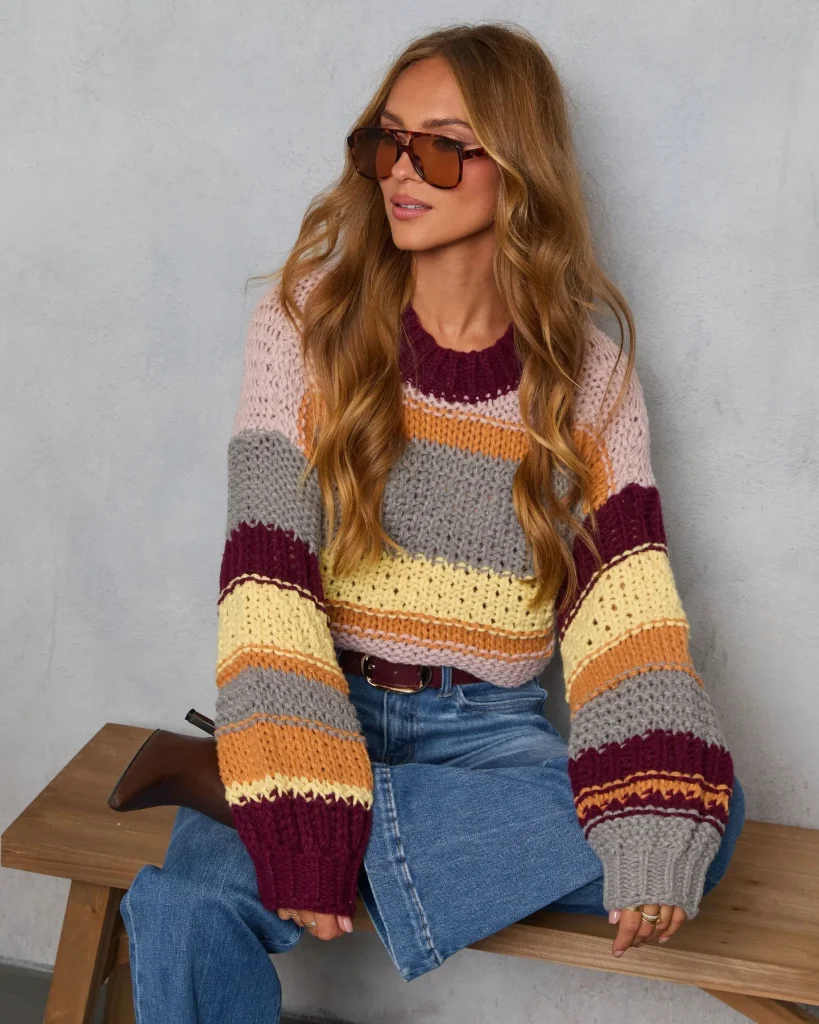
- The Look & Feel: A sleek, close-fitting long-sleeve top and matching leggings. They come in a variety of colors and patterns, but their true beauty is in their performance.
- Why It’s Essential: This layer’s sole purpose is to wick moisture away from your skin. By keeping you dry, it prevents the rapid heat loss that occurs when sweat cools against your body.
- How to Choose Yours: Look for “midweight” merino wool or a synthetic blend (polyester/spandex). Merino wool is a superstar because it’s naturally odor-resistant, soft, and stays warm even when damp.
- Styling Tips & Functionality: This layer stays on from the moment you get dressed until you crawl into your sleeping bag. Choose a top with a fun pattern that can stand on its own if you need to delayer inside a warm cabin or tent.
- Pro-Tip: Bring at least two sets: one for active days and a clean, dry set reserved exclusively for sleeping. Putting on dry base layers before bed is a game-changer for staying warm all night.
2. The Mighty Mid-Layer Fleece
The heart of your insulation system, this is the piece that delivers that essential, breathable warmth.
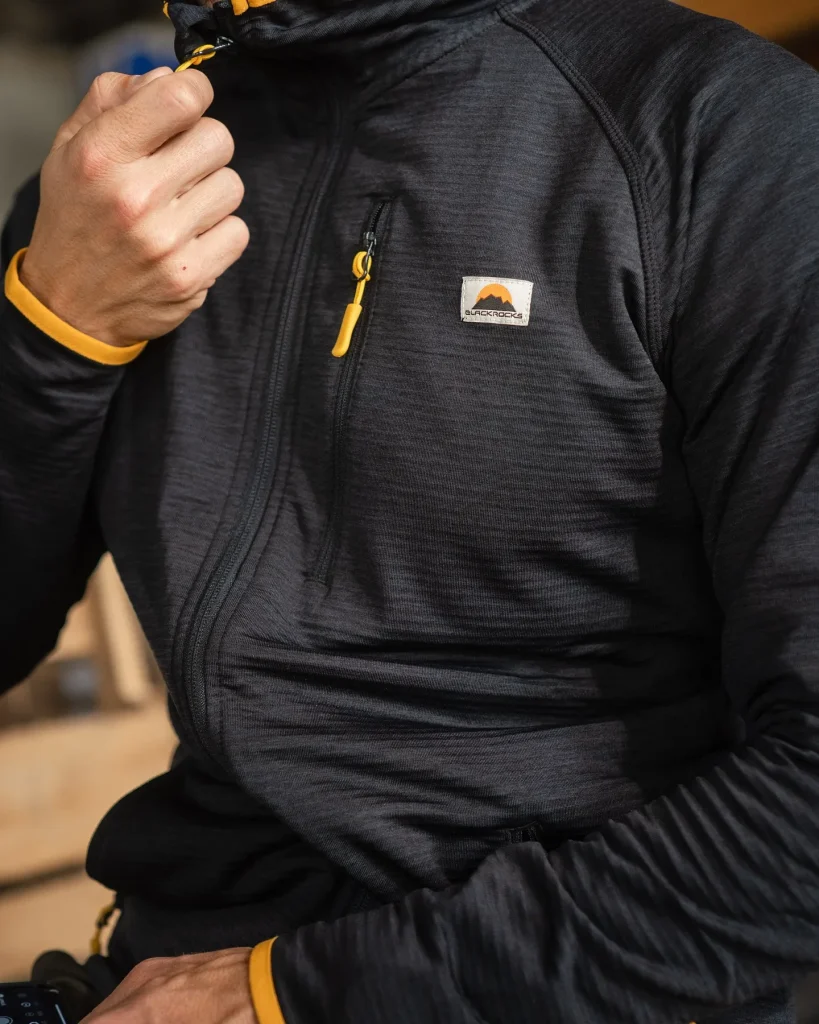
- The Look & Feel: A soft, cozy zip-up or pullover that feels like a warm hug. Modern fleeces are available in stylish cuts and colors, from classic neutrals to vibrant jewel tones.
- Why It’s Essential: Fleece traps body heat incredibly well, but it’s also highly breathable. This allows moisture wicked by your base layer to pass through it, rather than getting trapped.
- How to Choose Yours: Look for a “grid fleece” or a classic “200-weight” fleece. A quarter-zip or full-zip style allows you to easily vent heat when you start working up a sweat.
- Styling Tips & Functionality: This is your go-to layer for hanging around the campsite on a clear, calm day. It fits perfectly between your base layer and your puffy jacket.
- Pro-Tip: A fleece with thumbholes is a fantastic feature, as it helps keep the sleeves in place when you’re adding other layers and provides a bit of extra warmth for your hands.
3. Puffy Jacket Perfection
This is your personal furnace the ultimate insulation piece that provides maximum warmth for minimum weight.

- The Look & Feel: The iconic “puffy” jacket. It can be sleek and athletic or more robust and cloud-like. A hooded version is a must for trapping extra heat.
- Why It’s Essential: This layer’s job is pure insulation. It creates thousands of tiny air pockets that trap your body heat, keeping you toasty even when the temperature plummets.
- How to Choose Yours: You have two main choices for insulation: down or synthetic. Down (measured in “fill power,” with 800+ being premium) offers the best warmth-to-weight ratio but loses its insulating power when wet. Synthetic insulation stays warm when damp and is generally more affordable.
- Styling Tips & Functionality: This is your primary jacket for when you’re not moving much like making dinner or stargazing. It should be sized to fit over your base layer and fleece.
- Pro-Tip: Choose a bright color! Not only does it look great in photos against a snowy backdrop, but it’s also a key safety feature, making you more visible in the outdoors.
4. The Weatherproof Shell Savior
Your shield against the elements. This is the layer that keeps wind and snow from ruining your day.
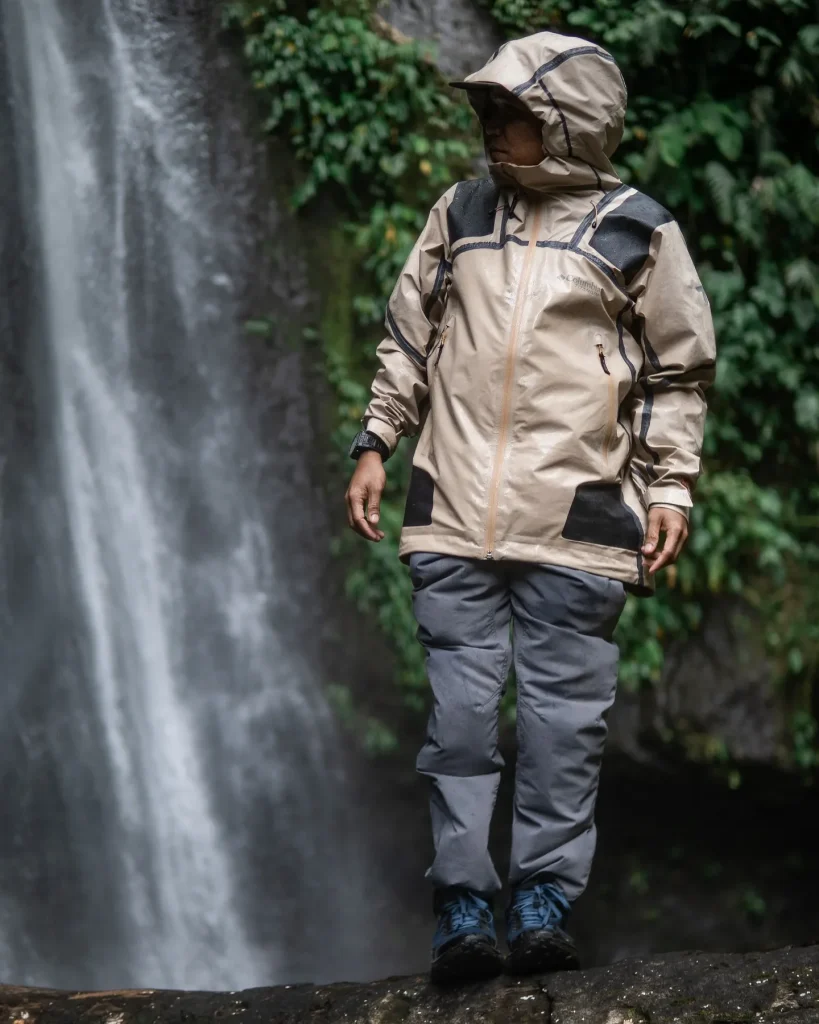
- The Look & Feel: A thin, durable, and often crinkly jacket. It’s not designed for warmth, but for protection. Look for clean lines and technical features like waterproof zippers and an adjustable hood.
- Why It’s Essential: This layer is your barrier against wind and precipitation. A truly “waterproof and breathable” shell keeps snow and sleet out while allowing sweat vapor to escape, so you don’t get clammy inside.
- How to Choose Yours: Look for jackets made with a technical membrane like “Gore-Tex” or a similar proprietary waterproof/breathable fabric. “Pit zips” (zippers in the armpits) are a non-negotiable feature for dumping heat quickly during high-exertion activities.
- Styling Tips & Functionality: Wear this as your outermost layer when it’s actively snowing or windy. On a clear but cold day, you might leave this in your pack and just wear your puffy.
- Pro-Tip: Ensure the hood is “helmet-compatible” even if you’re not climbing. This means it’s large enough to fit comfortably over a beanie without squishing your head.
5. Indestructible Insulated Pants
What you do for your top, you must do for your bottom. Warm, weatherproof pants are the key to all-day comfort.
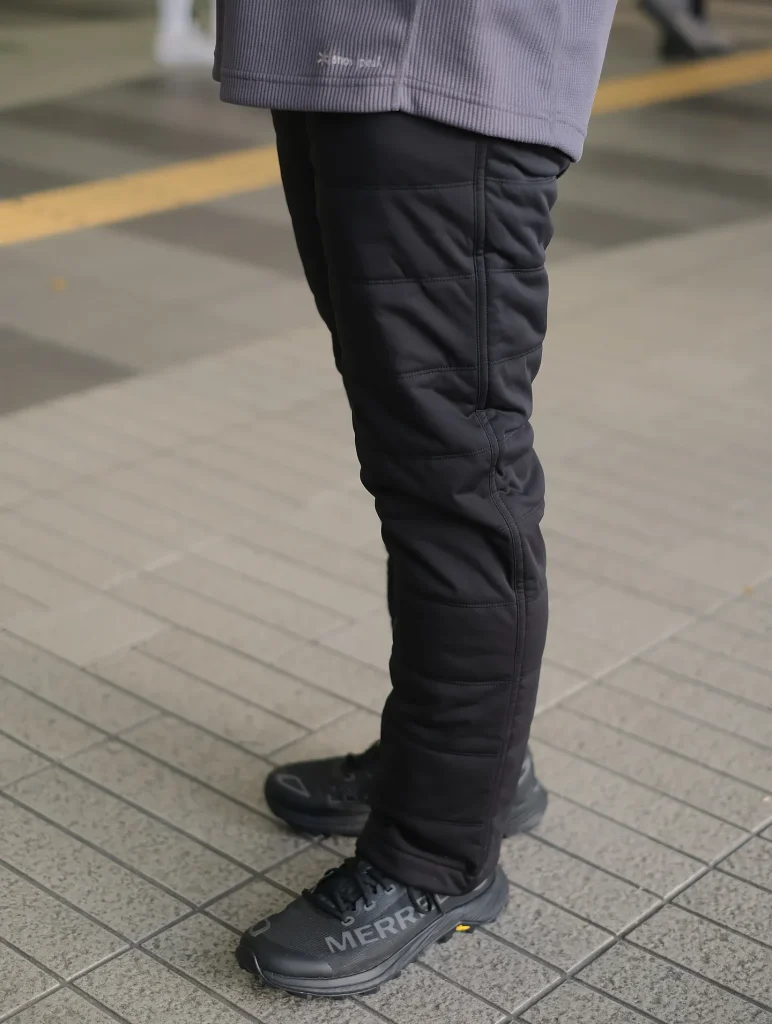
- The Look & Feel: These range from sleek softshell pants to more robust, insulated snow pants. A modern, articulated fit allows for easy movement.
- Why It’s Essential: Your legs are your engine, and keeping those large muscles warm is crucial for overall body temperature regulation. These pants provide insulation and weather protection in one package.
- How to Choose Yours: For all-around use, look for “insulated softshell pants” that offer warmth, stretch, and water resistance. For deep snow or stormier conditions, “hardshell insulated pants” provide full waterproof protection.
- Styling Tips & Functionality: Wear them over your base layer bottoms. Pair them with your fleece and puffy for a cohesive and incredibly functional outfit.
- Pro-Tip: Look for pants with a side zip on the ankle. This makes it much easier to get them on and off over bulky winter boots.
6. The Ultimate Wool Sock System
Happy feet are the foundation of a happy camper. This is not the place to cut corners.

- The Look & Feel: A thin liner sock paired with a thick, cushioned wool sock. Forget boring grey wool socks come in tons of fun colors and patterns.
- Why It’s Essential: This two-sock system wicks moisture (liner) and provides serious insulation and cushioning (wool sock). It’s the secret to preventing blisters and keeping your toes from freezing.
- How to Choose Yours: Your liner should be a thin synthetic or silk. Your outer sock should be a “midweight or heavyweight” merino wool hiking or ski sock. Again, no cotton!
- Styling Tips & Functionality: Let a bit of your patterned wool sock peek out over the top of your boots for a subtle touch of style.
- Pro-Tip: Never wear two pairs of thick socks. This can cut off circulation and actually make your feet colder. The liner/thick sock combo is the way to go.
7. The “Don’t Forget Your Dome” Beanie
The simplest and most effective way to preserve body heat and add a finishing touch to your look.
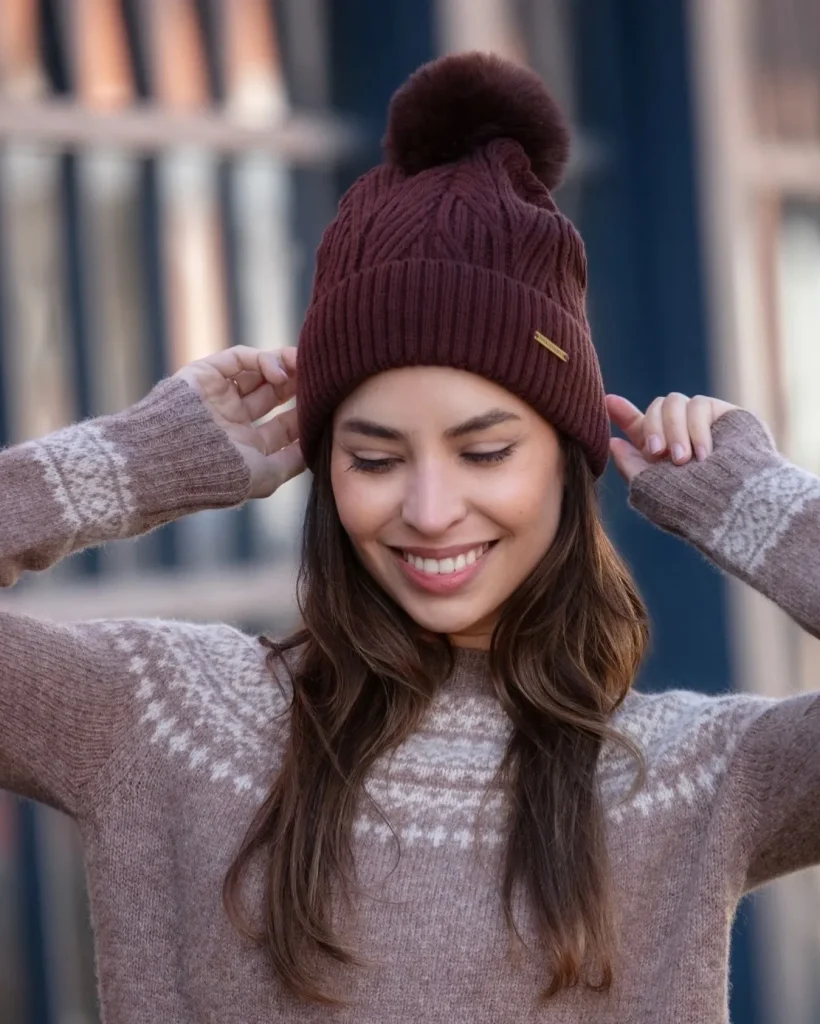
- The Look & Feel: A classic, well-fitting beanie. It can be a simple ribbed knit, a slouchy style, or one with a playful pom-pom on top.
- Why It’s Essential: You lose a significant amount of body heat through your head. Covering it is a non-negotiable step for staying warm.
- How to Choose Yours: A merino wool or fleece-lined beanie offers the best combination of warmth and comfort without being itchy.
- Styling Tips & Functionality: This is your everyday accessory. It pulls the whole look together, keeps you warm, and conveniently hides messy camp hair.
- Pro-Tip: Keep your beanie on while you sleep. It makes a massive difference in staying warm through the coldest part of the night.
8. The “No-Nonsense” Neck Gaiter
More versatile than a scarf and a crucial piece for sealing out cold drafts.

- The Look & Feel: A simple tube of fabric, often made of fleece or merino wool.
- Why It’s Essential: It seals the gap between your jacket collar and your chin, preventing precious heat from escaping. It can also be pulled up over your nose and mouth to protect your face from biting wind.
- How to Choose Yours: Merino wool is the gold standard here, as it won’t get as frosty or wet from your breath as fleece can.
- Styling Tips & Functionality: Choose a color that complements your jacket and beanie. Its versatility is unmatched wear it as a neck warmer, a headband, or a makeshift balaclava.
- Pro-Tip: On brutally cold nights, you can wear your neck gaiter as a light hat inside your sleeping bag for extra warmth without the bulk of a full beanie.
9. The Toasty Toe-Warmers (Insulated Boots)
Your connection to the frozen ground. The right boots are the difference between a great day and a miserable one.
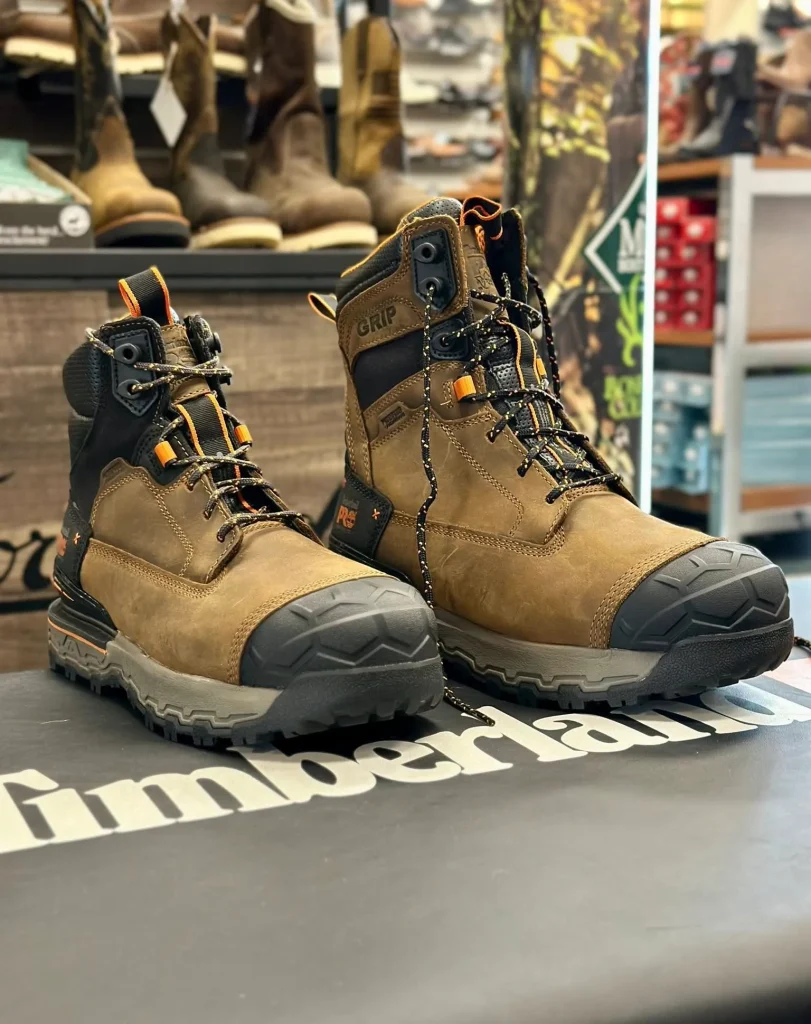
- The Look & Feel: Modern winter boots are both functional and stylish, blending rugged traction with details like faux fur or leather accents.
- Why It’s Essential: Insulated, waterproof boots keep your feet dry from snow and slush on the outside and warm on the inside. Good traction is also critical for safety on icy surfaces.
- How to Choose Yours: Prioritize a “fully waterproof” design and check the “temperature rating” (e.g., rated to -25°F). A thick, “high-traction lug sole” is a must for grip.
- Styling Tips & Functionality: Your insulated pants should fit comfortably over the top of your boots to keep snow out. They are your primary footwear for the entire trip.
- Pro-Tip: When trying on boots, do it with the thick wool socks you plan to wear. You need a little wiggle room for your toes; boots that are too tight will restrict blood flow and lead to cold feet.
10. The Glove & Mitten Game-Changer
The ultimate system for keeping your hands warm while still being able to perform tasks around camp.
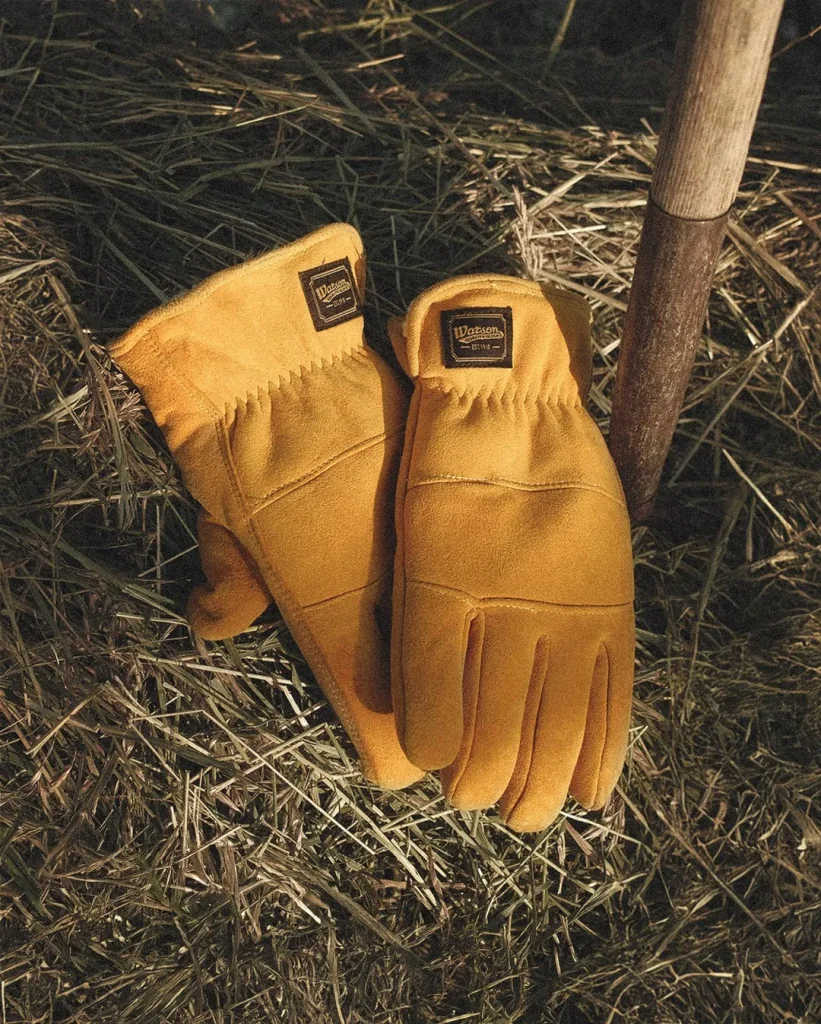
- The Look & Feel: A pair of thin liner gloves worn inside a pair of thick, insulated, and waterproof mittens.
- Why It’s Essential: Mittens are warmer than gloves because they keep your fingers together, sharing heat. The liner system allows you to slip the outer mitten off to do dexterous tasks (like adjusting a stove or zipper) without exposing your bare skin to the cold.
- How to Choose Yours: Your liner gloves should be thin merino wool or synthetic with touchscreen compatibility. Your outer mittens should be fully “waterproof and insulated” with either down or synthetic fill.
- Styling Tips & Functionality: This is pure function, but you can still coordinate the color of your mittens with your jacket or beanie.
- Pro-Tip: Get mittens with “leashes” or “keeper cords” that go around your wrists. This allows you to take them off without dropping them in the snow a small feature that you will be incredibly thankful for.
Putting It All Together: Sample Winter Camping Outfits
See how these 10 essentials combine for any activity:
- Active Snowshoeing: Base Layer Power Duo + Mighty Mid-Layer Fleece + Weatherproof Shell Savior (with pit zips open) + Indestructible Insulated Pants + Wool Sock System + Beanie + Liner Gloves. (Keep the Puffy Jacket in your pack for stops).
- Setting Up Camp & Chores: Base Layer Power Duo + Mighty Mid-Layer Fleece + Puffy Jacket Perfection + Indestructible Insulated Pants + Wool Sock System + Insulated Boots + Beanie + Glove & Mitten System.
- Relaxing by the Fire: All layers on! Base Layer + Fleece + Puffy Jacket + Shell Jacket (for wind protection) + Insulated Pants + Wool Sock System + Insulated Boots + Beanie + Neck Gaiter + Mittens.
Conclusion: Embrace the Cold in Style
Winter camping doesn’t require a choice between staying warm and looking good. It’s an invitation to invest in smart, technical pieces that work together as a cohesive system.
By mastering the art of layering with these ten essential items, you can build a compact, versatile wardrobe that will keep you protected, comfortable, and feeling stylishly confident.
Now go out there and enjoy the stunning, silent beauty of winter.
